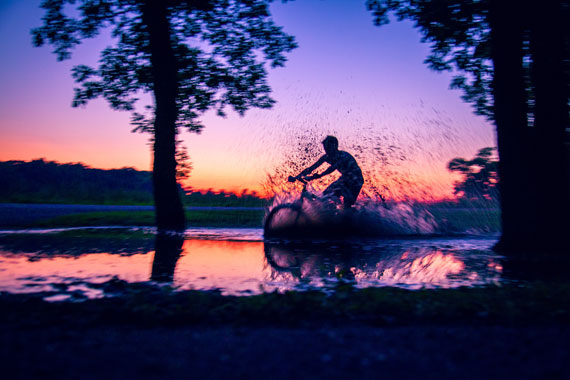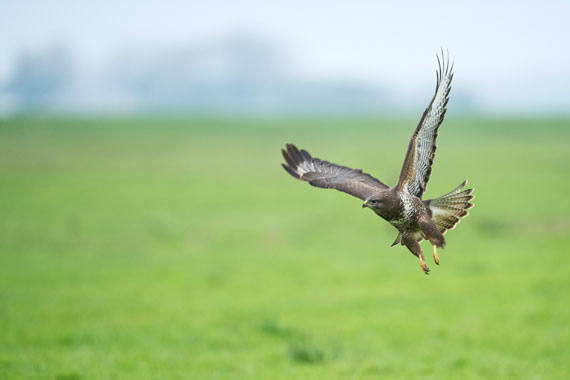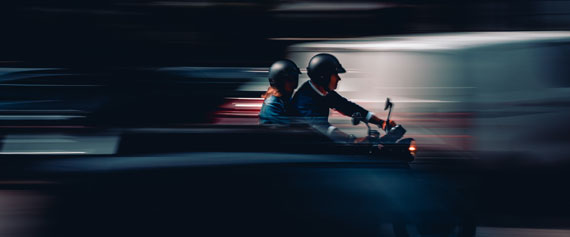Capturing an image of a moving subject can be one of the most exciting yet challenging tasks for a photographer. Whether it’s a bustling crowd, a running animal, or a speeding vehicle, managing the focus in these situations can be tough. But with the right knowledge and techniques, it can be handled with ease. This blog post will take you through some helpful tips on how to deal with moving subjects when setting the focal point.
Relevant reminder: spring sale ending soon for the Composition Cheat Sheets

Photo captured by Scott Ymker; f/4, 1/40s, 1600 ISO
Understand Your Camera’s Autofocus System
Modern cameras come equipped with highly sophisticated autofocus (AF) systems. These systems have different modes to cater to different shooting scenarios, such as stationary or moving subjects. If you’re aiming to capture moving subjects, you should get familiar with the continuous or tracking autofocus mode.
In continuous autofocus (AF-C on Nikon, AI Servo on Canon, AF-C on Sony), the camera constantly adjusts the focus as long as the shutter button is half-pressed. This feature allows you to maintain focus on subjects moving towards or away from you.
In tracking autofocus mode, the camera tracks the subject across the frame and maintains focus on it. This mode is particularly useful for subjects moving erratically.
Pre-focus on a Predictable Path
In situations where your subject’s path is fairly predictable, such as a runner on a track or a vehicle on a road, pre-focusing can be very effective. To do this, set your camera to manual focus (MF) mode and focus on a spot where you expect your subject to pass through. Once your subject reaches the focused spot, take the shot.
Use the Right Focus Points
Most modern cameras offer the option of multiple focus points. When photographing moving subjects, it’s generally a good idea to use dynamic or expanded autofocus points. In this mode, the camera utilizes a group of focus points that can track a moving subject more efficiently.

Photo by Vincent van Zalinge
The Symbiosis of Focal Point and Composition
The focal point and composition in a photograph are intrinsically linked. Together, they control where the viewer’s eye is drawn in an image. While the focal point is the ‘star’ of the photo—the element on which the viewer’s eye lands first—composition is the ‘director,’ guiding the viewer’s gaze around the frame.
When photographing moving subjects, the focal point often is the subject itself. However, the composition can be used to enhance the sense of motion and direction. For example, by using the rule of thirds, you can place your moving subject off-center, suggesting where it’s heading. This can make your photo more dynamic and engaging.
In addition, leading lines can be a powerful compositional tool to direct the viewer’s attention towards your moving subject. These could be anything from a road or a fence, to a line of trees or a river—any element that creates a line leading towards the focal point.
Diagonal lines, in particular, can create a strong sense of action when photographing moving subjects. They suggest dynamism and change, reflecting the inherent nature of your moving subject.
Employ the Panning Technique
Panning involves moving your camera to follow a moving subject during the exposure. This technique results in the subject being relatively sharp against a blurred background, emphasizing motion. To effectively use panning:
- Set your camera to shutter priority mode (S or Tv) and select a slow shutter speed.
- Set your camera to continuous autofocus mode to maintain focus on your moving subject.
- As your subject moves, follow it with your camera, matching its speed and direction.
- While continuing to move your camera, press the shutter button.

Photo by Kieran Sheehan; f/14, 1/10s, ISO 100
Remember, panning requires practice to get the right balance between subject sharpness and background blur.
Use Burst Mode
Burst mode (or continuous shooting mode) allows you to take several photos in quick succession. This mode increases your chances of getting at least one sharply focused shot of your moving subject.
Practice, Practice, Practice
Mastering focus on moving subjects requires practice. Spend time familiarizing yourself with your camera’s autofocus system and experimenting with the tips mentioned above. With time, you’ll gain confidence and find it easier to capture sharp images of moving subjects.
In conclusion, dealing with moving subjects can be challenging, but with the right techniques and enough practice, it’s entirely possible to get that perfect shot. Embrace the challenge and remember – every missed shot is a step towards a stunning capture.
For Further Training:
Are you ever tired of your photos looking dull or boring? Our new Composition Cheat Sheets have you covered. With clear, concise information on all the essential elements of composition, you’ll never be unprepared again. They are currently 81% off today for a spring sale which ends soon if you want to check them out.
The perfect companion for any photographer. Print one out whenever you need it. These cheat sheets consolidate crucial composition-related information, allowing you to concentrate on what truly matters – composing striking photographs.
Spring sale ending soon: The Composition Cheat Sheets at 81% Off
Like This Article?
Don't Miss The Next One!
Join over 100,000 photographers of all experience levels who receive our free photography tips and articles to stay current:







Leave a Reply